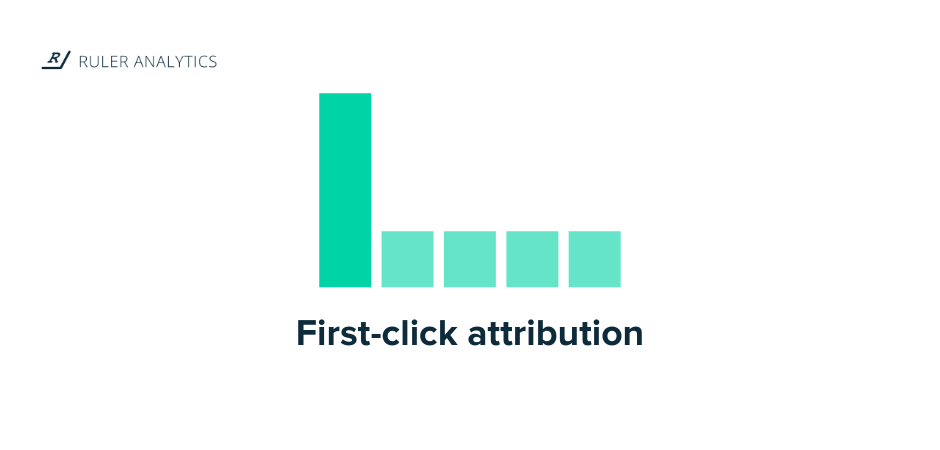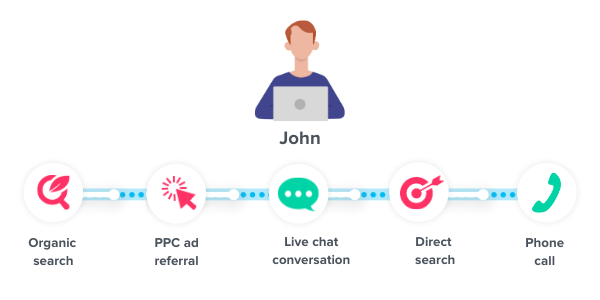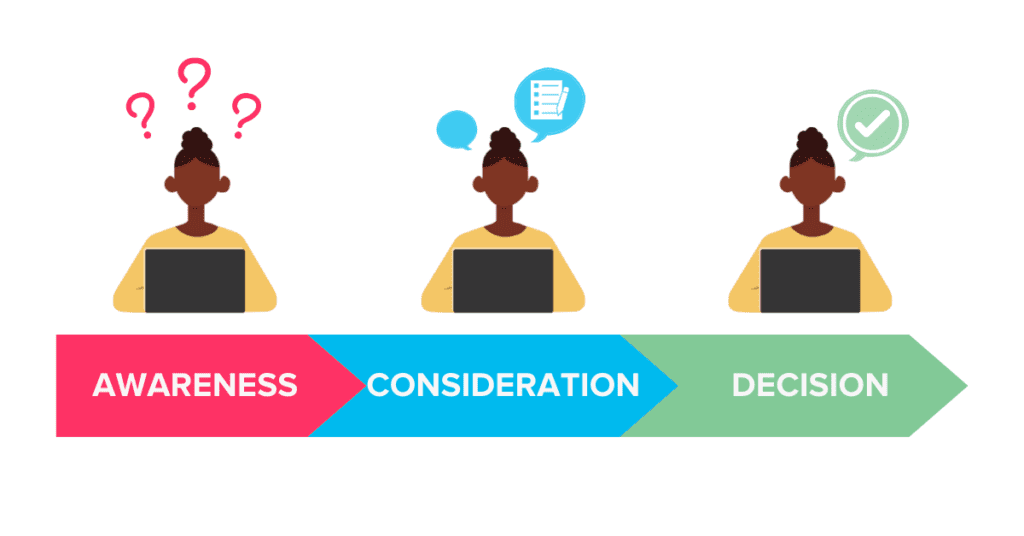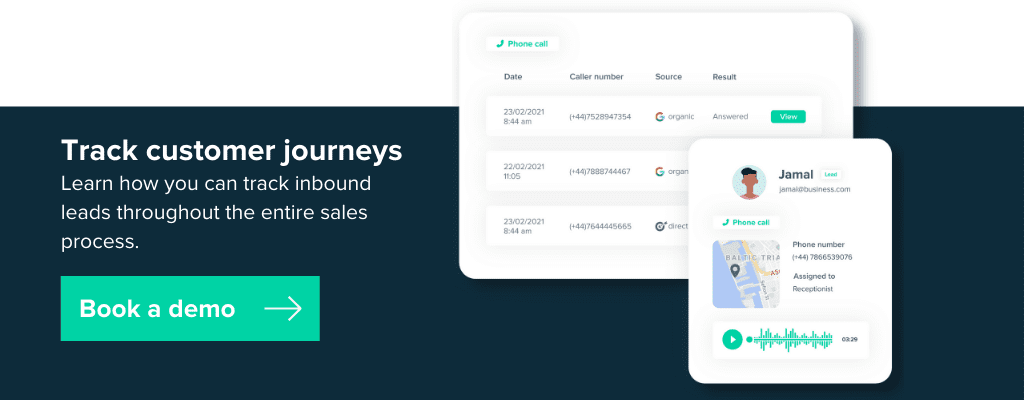First-click attribution is a valuable attribution model to consider when looking at crediting your marketing channels for closed sales. We walk you through what it is, how it works and how other models could suit you better.
Marketing attribution is a key tool for marketers, particularly those working in the B2B space or selling high-value products.
Only 60% of marketers are confident that they’re able to demonstrate ROI, and just 58% of marketers use an attribution tool.
And even then, marketers are using Google Attribution which isn’t always completely effective at definitively proving return on investment.
So what is first-click attribution exactly? And how does it help marketers prove what’s working?
In this blog, we’ll discuss:
Let’s get stuck in.
🎓 Pro Tip
Want to learn more about attribution? Well, we’re the experts so we put all our knowledge into one free e-learning platform.
Enrol in Attribution Academy today
First-click attribution is a single-touch attribution model where 100% of the credit for a sale is assigned to the first touchpoint in the customer’s path to purchase.

Let’s use an example to highlight how it works.
John visits your website for the first time via an organic search. He browses your site but then leaves without converting.
He revisits a few days later via a PPC ad you set live.

In this session, he contacts a sales rep via a live chat session where he becomes a lead.
A few days later, he revisits via a direct search and calls you where he converts into a sale.
Using the first-click attribution model, all of the credit would be assigned to the organic search John made.
But what about your PPC ad? By using this model type, you completely lose the impact of that advert, and therefore your return on ad spend result is inaccurate.
First-click attribution is a great way to measure your marketing effectiveness. But, you do end up losing visibility of how later touchpoints affect your customer journey.
Let’s recap on the customer journey stages.
The first is the awareness stage, where the user is looking for a solution to a problem they’re having. This is a fact-finding and information-gathering stage.


Next, is the consideration stage. The user will likely now have a list of providers that they’re considering purchasing from.
Lastly, is the decision stage. This is where a user converts into a customer.
With first-click attribution, you only get visibility of how your channels are working to drive the awareness stage of your customer journey.
In our example above, all of the credit would be placed on the blog. While this is great insight to see how your content is starting customer journeys, it doesn’t provide any further insight on later touchpoints.
🚀 Pro Tip
Want to track every touchpoint? Read our complete guide to tracking customer journeys by using Ruler Analytics. We’ll walk you through how you can track every touchpoint in every stage.
A common question marketers tend to ask is what the difference is between first-click attribution and last-click attribution. And the answer is simple.
While first-click attribution assigns all of the credit to the first touchpoint, last-click assigns it all to the final touchpoint.
Going back to our example customer journey with John, if we’d used last-click attribution on his customer journey, then all of the credit would be assigned to his final touchpoint. In this case, a direct search.



First-click and last-click each have their benefits. While first-click highlights which channels, campaigns and content work to start new customer journeys, last-click shows you what closes them.
Both are useful as you can start to identify trends in what’s working for your business. Once you know what works well to start and close your customer journeys, you can share that content with new audiences.
For example, you could find a PPC ad that works really well from a last-click perspective. This could result in you adding more budget and thus closing more sales.
Both attribution model types are useful for optimising your marketing.
According to a study done by Digiday, 44% of marketers stated that a first-touch attribution model is more useful for measuring digital campaigns than a last-click attribution model.
But is it the right model type for you?
Related: Read our full guide to attribution modelling
Well, there are a few things you need to consider first.
If you’re trying to get a definitive ROI or ROAS, then you need a model type that takes into account all of your marketing touchpoints.
If you just want to see what starts or ends your customer journeys then first or last-click attribution will work just fine.
Do you use conversion types like form submissions, phone calls or live chat?
If so, then your data is going to be siloed. How do you link an anonymous visitor to your website to a closed customer when they’ve filled in a form or called your business. With attribution in place, you can track each step. But only with multi-touch attribution can you properly evidence each touchpoint.
🚀 Pro Tip
Read our complete guide to multi-touch attribution and see how each model type works.
If you’re just starting out with attribution, then first-click is a great option. Single-touch attribution models allow you to get grips with arguably the most important touchpoints in the customer journey.
Multi-touch attribution will give you more insight, but it’s a lot more data to comb through and make sense of too. But with it in place, you can better understand the roles channels play together, as opposed to just on their own.
Attribution models allow you to answer complex questions regarding your marketing, and make sense of complex and convoluted data.
76% of marketers say they currently have or will have the capability to use marketing attribution.
As more marketers move to attribution, they’re going to get data that allows them to track, evidence and optimise their marketing.
And what does that mean? Well, put simply, better results.
Related: See how Totalmobile improved its ROI by 23%
To be ahead of the curve, you need to implement an attribution tool that will help you connect the dots between your website, your CRM and your analytics. With a tool like Ruler Analytics in place, you’ll be able to definitively prove what works and what doesn’t and change your strategy accordingly.
Read how Ruler Analytics can help you link your closed revenue back to your marketing with attribution. Or, if you want to see the data in action, book a demo of Ruler.

